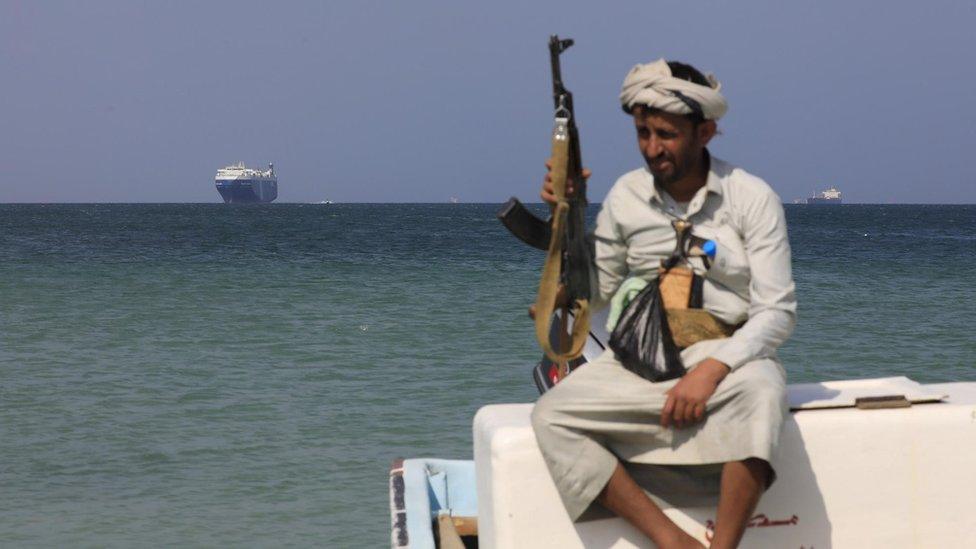On board HMS Diamond as it faces Houthi attacks
- Published
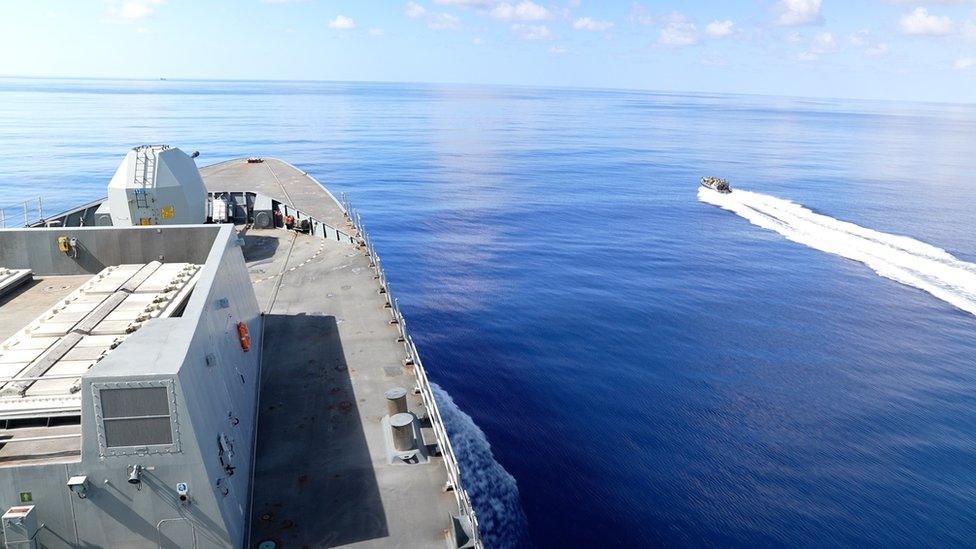
The BBC was on board HMS Diamond during a mission in the Red Sea and Gulf of Aden
From the first shout of "fireball" the crew of HMS Diamond have just two minutes to react. In that time they have to work out whether the missile, travelling at more than three times the speed of sound, poses a direct threat to their ship and nearby merchant vessels.
We were the first media on board HMS Diamond since she joined the US-led operation to protect merchant shipping in the Red Sea. We witnessed the threat first-hand as she prepared to run the gauntlet of Houthi drones and missiles being fired from Yemen.
The captain of HMS Diamond says the Houthis are now using more advanced and more lethal weapons.
Cdr Pete Evans says when the ship first entered the Red Sea in December, one-way attack drones, or UAVs, were the main threat. But he says the Houthis have "moved much more into conventional and ballistic missiles which are harder to defend against and cause much more damage".
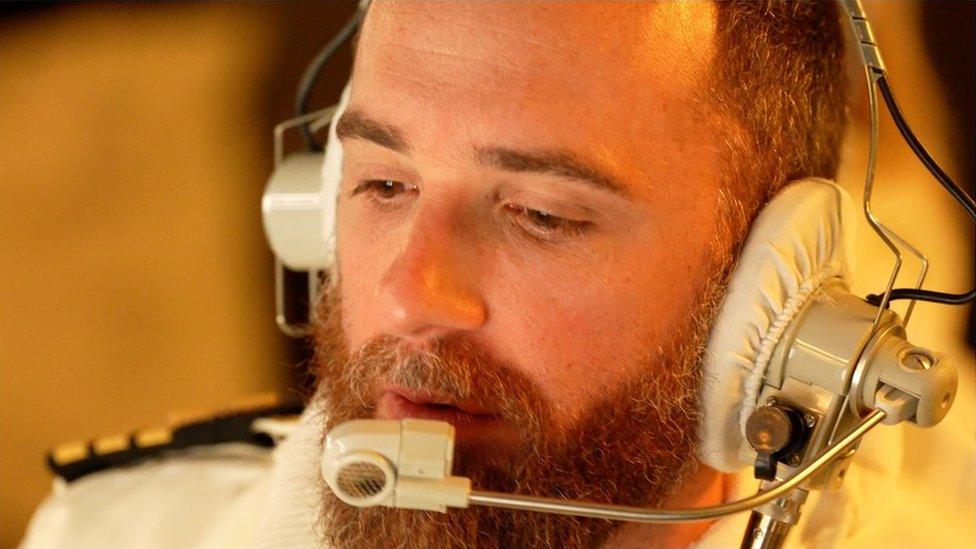
Cdr Peter Evans is the ship's commanding officer
We began our voyage as the crew made the final checks to the ship's weapons systems.
Its main Sea Viper missiles were already primed, hidden in a silo at the front of the ship - with scorch marks still visible from previous launches. Each missile costs more than £1m ($1.3m). They are the ship's main line of defence. But Diamond also has Phalanx machine guns and 30mm cannons on each side of the ship - close-in weapons.
The Phalanx can fire more than 3,000 rounds a minute. For the very first time the crew have also used the 30mm cannon to successfully shoot down a drone.
Diamond's main task in the Red Sea has been to protect merchant ships travelling through this key trade route. But for this mission she'd be escorting a naval task force of UK support ships sailing towards the Indian Ocean - with two US destroyers providing additional protection.
Up on the bridge the navigator, Lt Josh Tyrie, showed the route we'd be taking - past Houthi-controlled territory in Yemen, through the narrow Bab al-Mandab Strait and out into the Gulf of Aden.
They call this the High Threat Area - where the Houthis have been focusing their attacks on both merchant shipping and coalition warships.
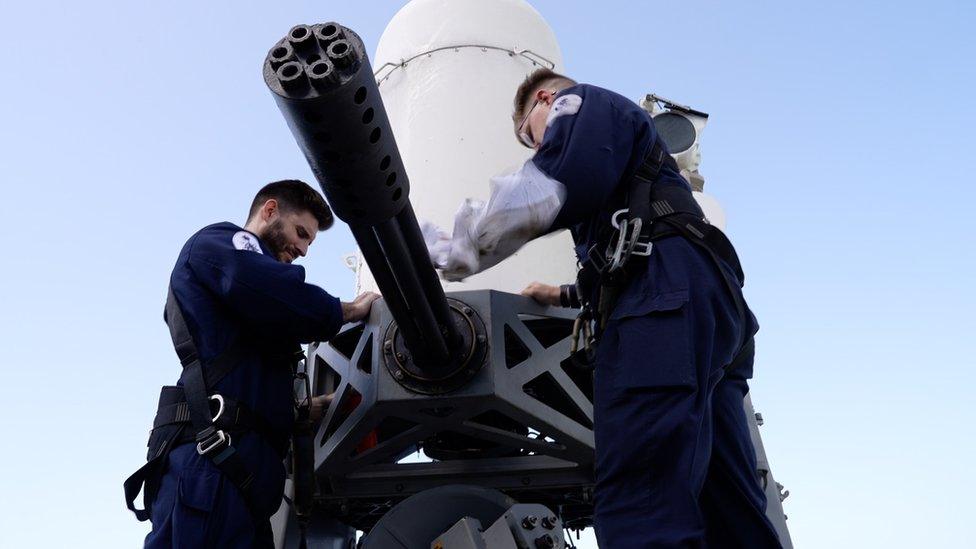
HMS Diamond is armed with Phalanx machine guns
"There's a regular drumbeat of drones and missiles, so there's a good possibility that will happen," Lt Tyrie said.
By now the entire crew had changed from their blue uniforms to fire-resistant white overalls. We'd all been issued anti-flash hoods and gloves to wear in case the ship was hit.
The upper decks were declared out of bounds - with dim red lighting in the ship's passageways. Photos of Iranian-designed drones, which might be used against the vessel, are displayed along the decks.
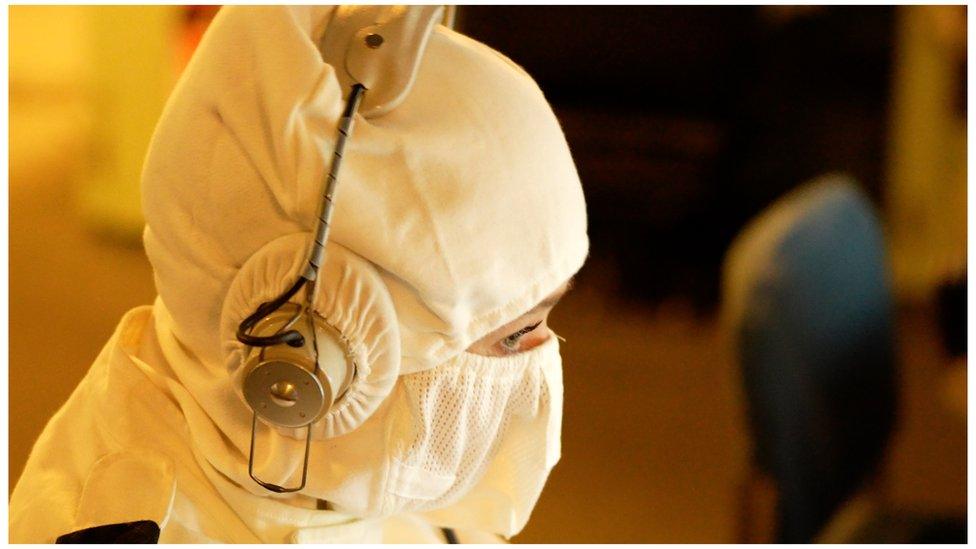
The crew's anti-flash hoods would provide some protection from fire
We waited inside the operations room - the ship's nerve centre - where the crew stare into rows of monitors and screens. With the ship's powerful radar they can track multiple objects simultaneously for hundreds of miles.
At 20:35 came the first blast of a whistle with a shout of "fireball" - the code for a detected missile launch. The ship's alarm sounded to alert the rest of the crew with the words: "Air threat warning red - missile inbound."
As they tracked the missile's flight path they issued updates. The air threat was lowered from red to yellow and then white. The tension eased and sailors removed their anti-flash hoods and gloves.
It was the first of four anti-ship ballistic missiles fired by the Houthis that night. Lt Cdr Martyn Harris, Diamond's executive officer, explained they had just two minutes to react to launches, with the missile travelling at more than three times the speed of sound.
"Yes it can feel a bit intense if someone is potentially trying to shoot something at you," he said.
Diamond has been targeted by the Houthis in the past - but in this case the missiles did not pose a direct threat.
Two days later there's another "fireball" warning at 03:20. Once again the alarm is sounded, and the crew rush to their positions. This time too the missile flies out of range and splashes into the sea.
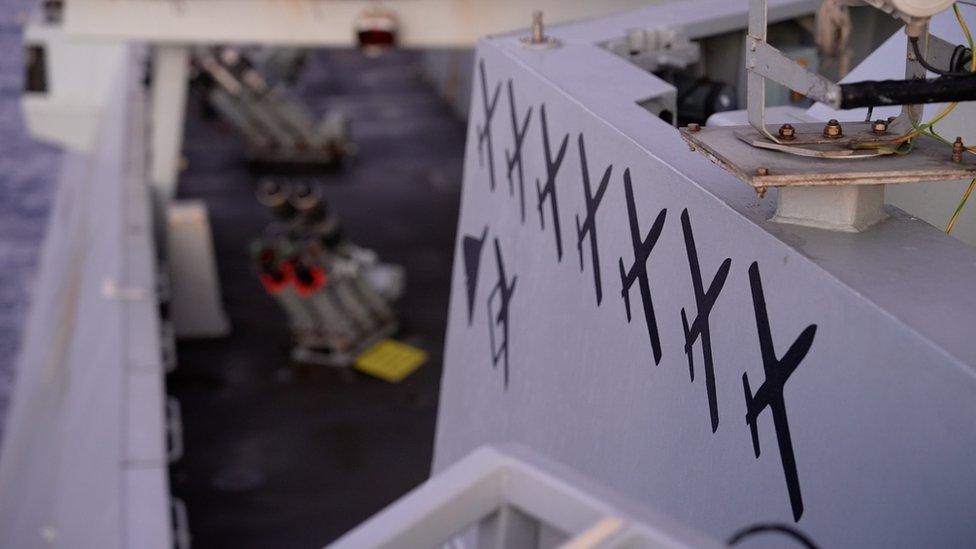
A tally of drones taken down has been painted on the bridge of HMS Diamond
HMS Diamond has not yet shot down any Houthi missiles. But it has destroyed nine Houthi drones - seven of them in just one night in January. Silhouettes of the nine drones are painted on the side of the ship's bridge. Diamond is the first Royal Navy warship to have shot down a threat from the air since 1991.
There's another tense moment on this escort mission, when they locate a signal from the ground to a number of Houthi drones. The UAVs are flying north of the task group. It's a deadly version of hide and seek. But the drones do not appear to spot them, and one is later shot down by a US warship further north.
Leading hand Erin Graham knows what that's like. She was the ship's electronic warfare director on duty on 9 January. She describes it as a "big swarm attack, which escalated very quickly".
There were 18 drones in all. Six of them were taken out by Diamond's Sea Viper missiles and one was shot down by its 30mm cannon, operated remotely from the operations room.
Erin, 22, said "you've just got to remain cool, calm and collected and go through the drills".
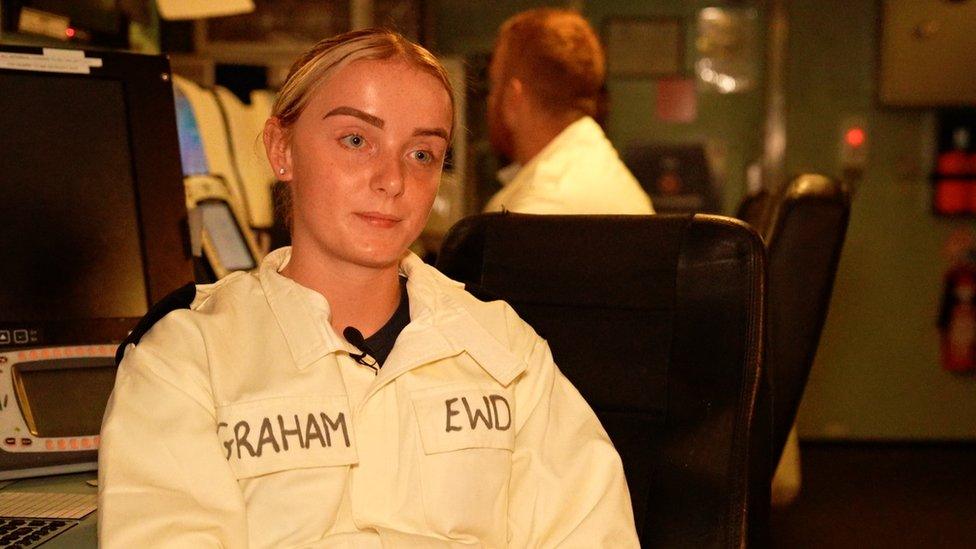
Leading hand Erin Graham was on duty during a drone attack on the ship in January
Diamond's Captain, Cdr Pete Evans, calls it a challenging tempo of operations, in hot and sticky conditions. "The levels of concentration [are] exhausting," he says, with "long periods of nothing much happening, and then a few really short intense spikes of your life being at risk".
The 224 military personnel on board work mostly on shifts of between eight and 12 hours, leaving little time to relax. When they're not asleep, most unwind in the gym or watch TV. Up in the officers' wardroom they were playing old episodes of Hornblower, the swashbuckling drama series set in the Napoleonic era.
There's limited wi-fi, but it's often switched off when the threat level rises.
Even in calmer waters, in the Gulf of Aden, the job still isn't over.
Diamond spends several days tracking a suspect fishing vessel, or dhow. It's declared stateless - giving a legal justification to search it. But it has also been flying an Iranian flag.
The ship's small team of Royal Marines secure the vessel while another team conduct the search. They're looking for weapons or drugs, but in the end they find nothing illicit.
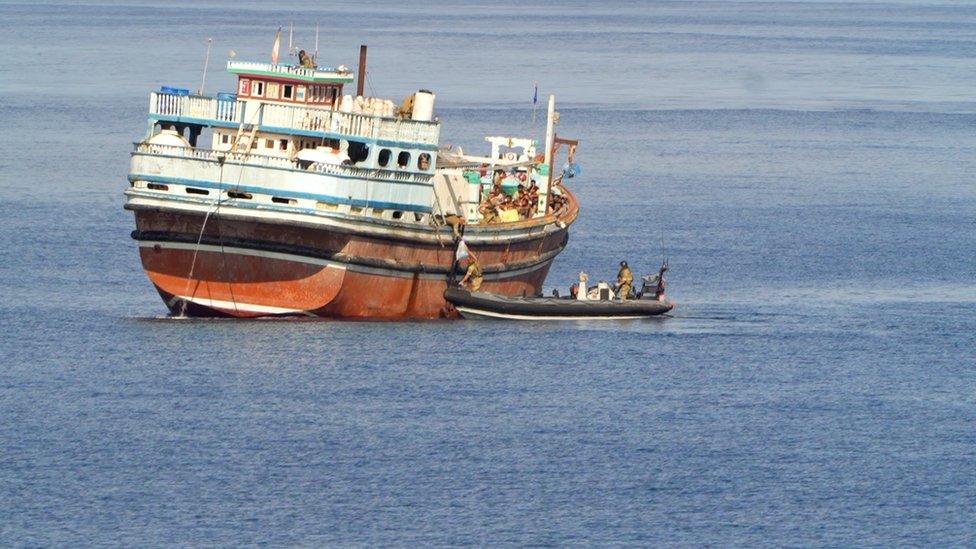
A dhow in the Gulf of Aden that Diamond tracked
The US has directly accused Iran of supplying weapons to the Houthis. But Diamond's captain is more cautious.
Cdr Evans acknowledges it's likely weapons are being smuggled, but he says he doesn't want to speculate from where.
There are hundreds of similar small boats sailing through the wide expanse of the Gulf of Aden. Stemming the supply of weapons may prove even more challenging than stopping the Houthi attacks.

Related topics
- Published18 March 2024
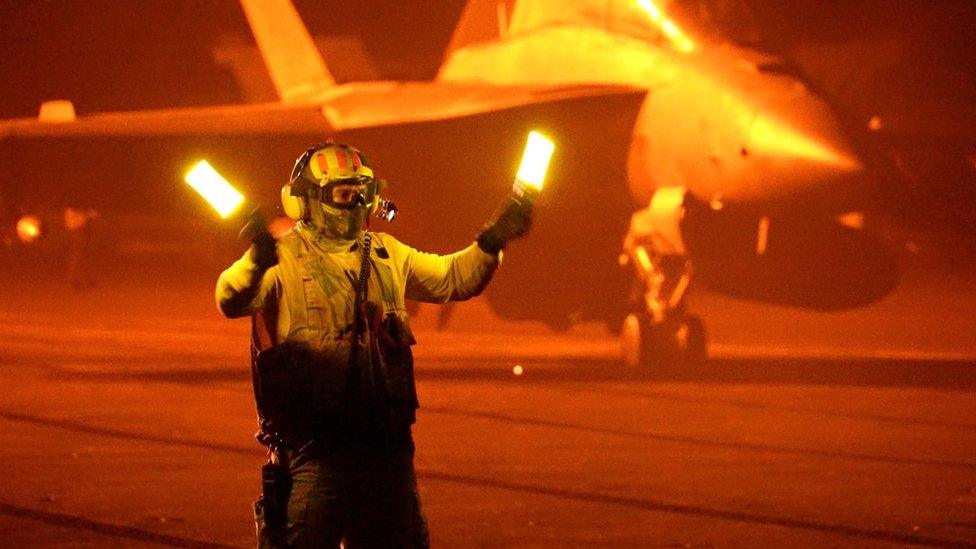
- Published25 March

- Published10 January 2024
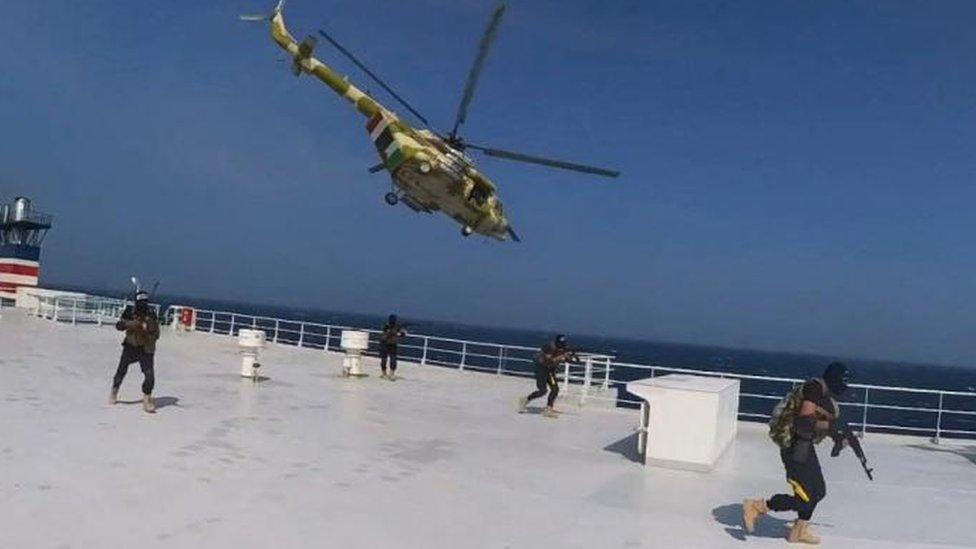
- Published4 January 2024
